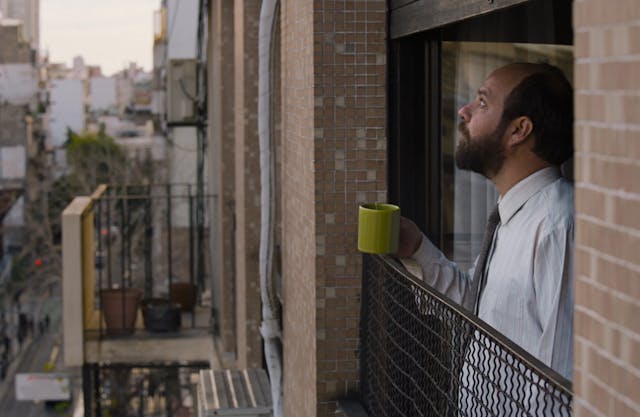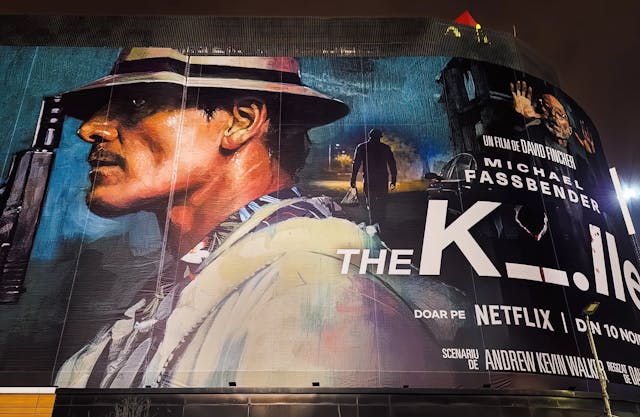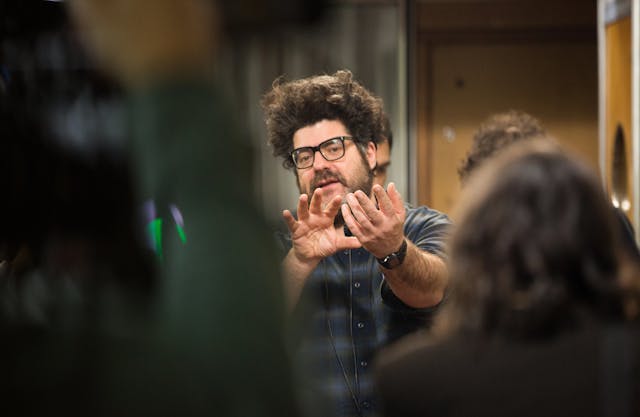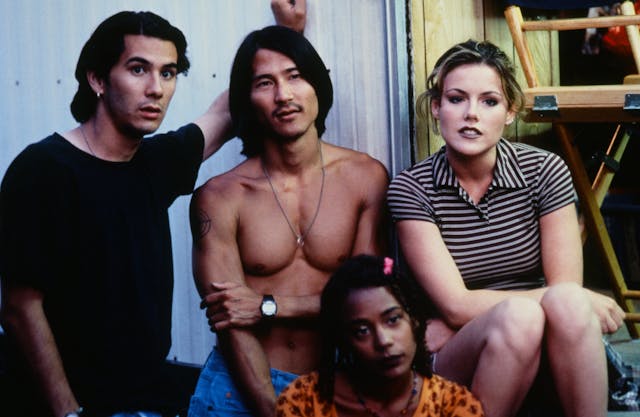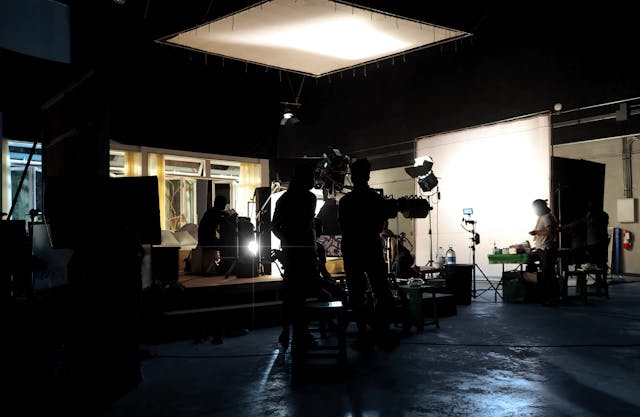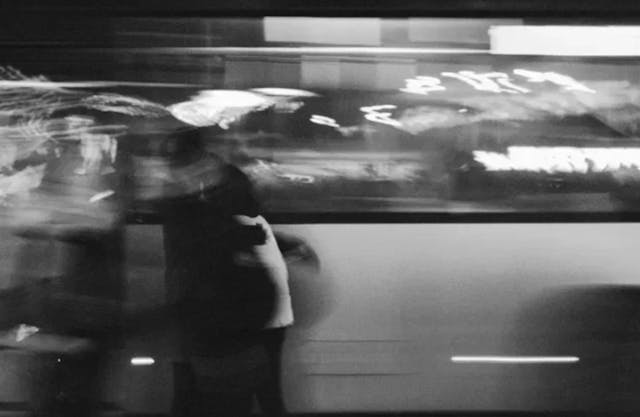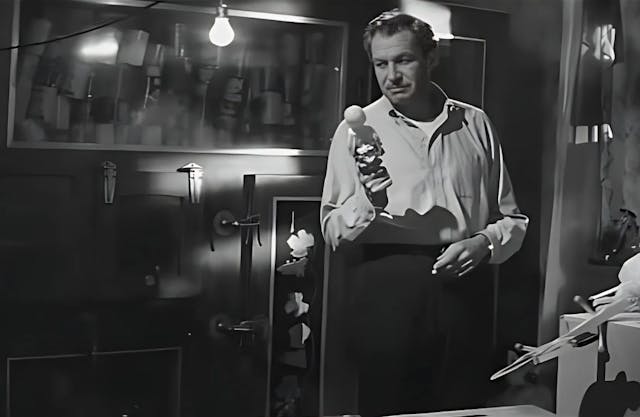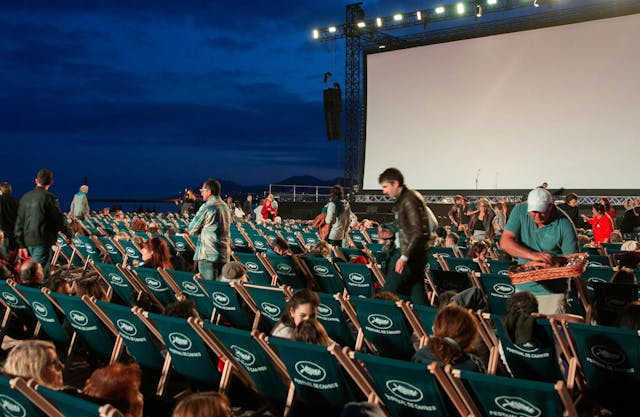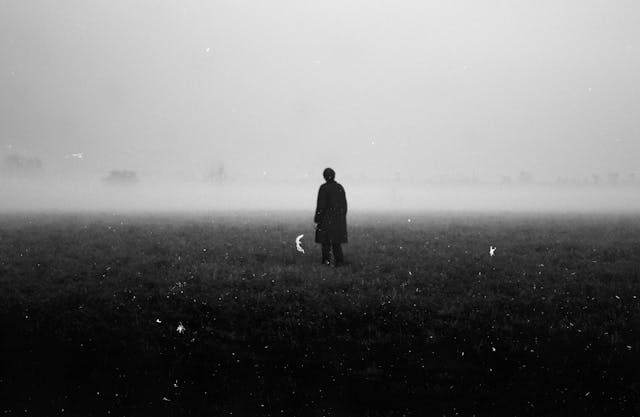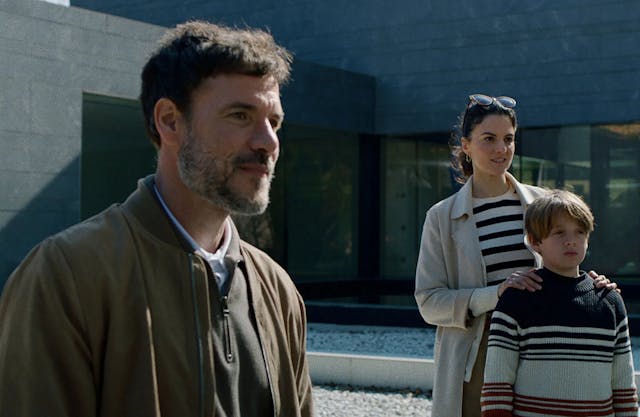Suspense in Black & White: Must-See Classic Hitchcock Crime Movies

Alfred Hitchcock's Hollywood output is so sterling that his filmography before "Rebecca" (1940) tends to be overshadowed on this side of the Atlantic. Here, we look at three classics from that crucial era in the career of the Master of Suspense to settle the score. Remember, these are not minor works but outright classics in their own right. You can spot themes and aesthetic flourishes to which he would return repeatedly throughout his career. So, get the popcorn going, and settle down for a perfect triple feature. Suspenseful crime movies don't get better than these two.
The 39 Steps (1935)
Hannay (Robert Donat) is a Canadian man on a brief trip to London. His business, or his identity, is really of no consequence besides the fact that he is innocent of the mess he is about to get involved in. While killing time in a music hall, a shot disperses the crowd, interrupting the act of a man with prodigious memory. In the melee that develops, a strange woman (Lucie Mannheim) insinuates herself to Hannay and convinces him to take her to his flat for the night.
It sounds too good to be true, and it is. Once safe at his home, she comes clean. She was the one who shot a gun in the music hall, trying to sneak away from a couple of men trying to kill her. She speaks of an official secret she must keep from enemy agents. She may be crazy, but the two men standing in the corner, waiting, seem to prove her story right. Hannay feeds her, leaves his bed to her, and crashes on the couch. His slumber is interrupted in the middle of the night when the woman comes stumbling into the room with a kitchen knife stuck to her back. She barely manages to whisper a clue before dying. And off Henney goes, trying to beat that rap and prevent some unknown power from stealing…something!
We never know the nationality of the enemy agents or their political inclinations. The only thing we know is that they are called "The 39 Steps." It's enough to say they are enemies of England. It does not matter what the secret is, just that it is enough to justify killing the hero. This is the dramatic conceit that Hitchcock baptized as "the McMuffin." It is an excuse to set the plot in motion. You can see it in many literary and dramatic works on stage and screen. Hitchcock himself would use it again and again, most famously in "North By Northwest" (1959), one of his most popular films. The richness of the characters, the performances, and the filmmaking offset the relative emptiness of this device.
Eventually, Henry picks up with an unwilling collaborator. Pamela (Madeleine Carroll) resists vouching for him on a train to the little Scotland hamlet, where a crucial contact awaits. Later, they cross paths again when he is mistaken for a politician at a conference. Henry and Pamela end up handcuffed together, and they must reach some detente to save their lives. Their combative bickering turns into flirting. Any movie or series that uses that trope is indebted to Hitchcock.
Henny crosses paths with many characters that seem to inhabit their little movies. Check out his poignant encounter with an opportunistic farmer and his much younger wife, who pays a high price for helping out the fugitive. There’s a couple of traveling salesmen tempting a vicar with women’s underwear.
Hitchcock could be cruel, on-screen and off. But “The 39 Steps” and “Sabotage” manifest an unexpected tenderness for people. Check out the opening scene, set at a Music Hall. He establishes Donat as our protagonist but lends attention to other characters, bystanders that will not be seen except in this scene. Check out the farmer asking Mr. Memory, “What causes pip in poultry?” Even an unseen person who repeatedly asks, “How old is Mae West?” makes an impression. The sequence is a showcase of Hitchcock’s sense of humor.
No matter how small the role is, it feels distinctive and substantial. Contemporary filmmakers could learn a thing or two about this. I lost count of how many blockbusters sacrifice unseen, generic masses to otherworldly menaces or supervillains.
"The 39 Steps" contains examples of Hitchcock's inventive use of film language. Check out the beautiful dissolve that conveys Hannay, a clue from the doomed unknown woman - this is the magic Rodrigo Moreno aims to recapture in "The Delinquents" -. Also, crafty studio mise-en-scene melds seamlessly with location shooting. Check out the scene where Hannah and Pamela are driven through the moors by two goons passing for cops. The camera starts the scene inside the car cabin with them and gracefully glides away to register the car going down the road toward the unknown. A discreet cut as it pans over the cartop anticipates Hitchcock's strategy to make "Rope" (1948) look as if it was filmed in a single take.
Sabotage (1936)
Like "39 Steps", this movie is steeped in society. London and its people are characters as important as the protagonist. It's a mood to which Hitchcock rarely returned in his Hollywood phase. Most of his Hollywood output is seeped in loneliness and isolation. In "Rear Window" (1954), Jimmy Stewart peeps on his neighbors from afar. To get closer can only be dangerous. In "The Birds" (1963), we get entangled in the dynamic of a small California town, but an unexplained natural phenomenon soon tears it apart.
"Sabotage" (1939), not to be confused with the later U.S.-set "Saboteur" (1942), is steeped in early World War II paranoia. The putative villain is Viktor Homolka, a Hungarian actor who plays up his foreign accent - it could easily pass for German. More foreigners seeps out of his last name, Vorloc. But just like in "The 39 Steps," the menace is not given a nationality or an ideology. It could be anybody. We only know the enemy is inside, and some countrymen are its necessary accomplices. Vorloc's contact is distinctively British, just like the Professor serving as Hannay's nemesis.
Mr. Vorloc manages a little movie theater and lives in an apartment behind the screen - a true movie buff dream! - Alas, he does not care much for films. It’s just a cover for his real job as a mercenary serving a shady, unnamed enemy. His American wife, Mrs. Vorloc (Sylvia Sidney), ignores her husband’s extracurricular activities. Less than in love, she is grateful he treats her well and dotes on her little brother Stevie (Desmond Tester).
The movie begins with a proper act of, well, sabotage. Vorloc has put sand in the tanks of an electrical plant, cutting off power in all of London. His minders are not too enthused with the results and push him towards an outright act of terrorism: planting a bomb in Picadilly Circus to go off on a Saturday afternoon when the place is crowded with people.
The script, credited to Joseph Conrad, Charles Bennett, and Ian Hay, is a beautiful example of Hitchcock’s approach to suspense. From the get-go, the audience knows everything, more than the heroes. When will Mrs. Verloc realize what is happening? Will Ted Spencer (John Loder), the handsome undercover cop who pines for her, understand in time she is innocent? Will the bomb go off? Will it take the life of a beloved character? This is pure Hitchcock. He was famous for working closely with writers, and he was generous when giving them credit.
“Sabotage” is also a magnificent showcase for the lead actors. Sidney was a Hollywood trooper with substantial work under her belt - check out the magnificent alcoholism drama “Merrily We Go To Hell” (Dorothy Azner, 1932) -. Mrs. Vorloc is a challenging role, conveying vulnerability without letting it ripe into weakness. Homolka is stoic but effective at portraying the pathological compartmentalization of regular men who do awful things without blinking an eye.
It Takes a Village to Make Suspense
Like “The 39 Steps,” “Sabotage” is not an airtight drama. The filmmaker takes pains to set it in a recognizable world. Society is an important player. Check out the initial sequence. Once Vorloc is introduced as responsible for sabotaging the electric grid, Hitchcock cuts to a series of Londoners dealing with the consequences. There is certain merriment at the novelty of such an event. Hitchcock registers the scene with documentarian flair. Knowing what the city and its dwellers will go through in the upcoming years makes it even more poignant.
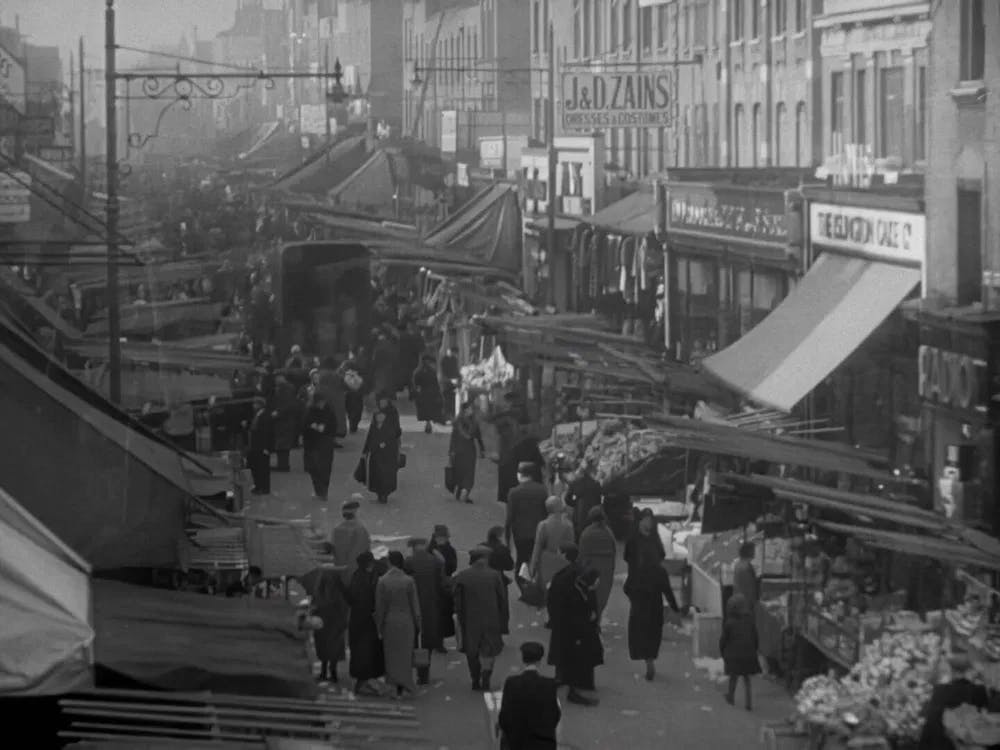
Films of their time and their people: "The 39 Steps" and "Sabotage" are fiction grounded in reality. / Photo courtesy of Entertain Me Publishing LTD.
Large groups of unnamed citizens make for brilliant supporting players who come and go in the blink of an eye but always leave an impression. They give the movie the pulse of real life beyond the contrivances of drama. Check out the street salesman who delays the delivery of the bomb with a demonstration of toothpaste or the kindly bus fare collector who lets the courier on board. They are cut out of the same cloth as the milkman who lends his smock and cart to Hanney so he can evade the foreign agents. Contemporary filmmakers could learn that this trope does not live in a vacuum. Even though classic black and white movies like these are prime Art House fare, "The 39 Steps" and "Sabotage" are wildly entertaining and more fun than the standard blockbuster.
The Lady Vanishes (1938)
“The Lady Vanishes” is one of Alfred Hitchcock’s greatest hits in England. The 1936 movie is a modern, thrilling yarn. Set in 1936, the characters and dynamics between them reflect the politics of the time, as the British Empire struggled with how to respond to the rise of Nazism in Germany.
The action starts at a mountain hotel in the fictional central European nation of Mandrika - think Yugoslavia, but in a silly key. A gaggle of travelers are left stranded when an avalanche blocks the railways. The group includes Miss Froy (May Whitty), an elderly governess returning home to visit her parents; Iris Henderson (Margaret Lockwood), an heiress going to London to marry into the aristocracy; Gilbert Rodman (Michale Redgrave), a musicologist investigating European filk songs; and Charters (Basil Radford) and Caldicott (Naunton Wayne), a couple of cricket enthusiasts concerned about not returning in time to attend a much-expected match.
The extended first act almost plays like a zany comedy, gently ribbing British insularity and the cultural shock Brits experience when dealing with the Old Continent. Benign circumstances bring the characters together, but it anticipates the upcoming imperative to engage with foreign, much different cultures to resist and repel the nazi threat. Most English characters treat the Mandrikians as rubes on a scale that goes from gentle ribbing to downright disdain. Hold on to your righteous anger. This is like the Marx brothers wreaking havoc in Freedonia, Ruritania. No actual ethnicity is harmed in the process.
The caste system is delineated among the Brits: Henderson is a nouveau rich, enjoying the privileges money gives her - but without being obnoxious about it; Caldicott and Charters and the governess come off as stand-ins for the middle class - the men being ridiculous in their abiding by British ways. Privilege is acknowledged, as Iris gets her picking of food and drinks for her and her two friends - chicken and a Magnum of champagne -while Charles and Caldicott go wanting. The hotel does not have enough food to supply the sudden influx of hungry travelers.
Hitchcock burns - or rather invests - a third of the running time in the hotel. Not a single minute is wasted. This is a master class in character-building and context; everything brings depth to the twists and turns of the plot, which goes into high gear as the passengers board the train.
Iris gets hit in the head by a planter someone pushes from an upper floor. The episode adds a shade to her formidable disposition. She can be vulnerable, too. Mrs. Froy is in her cabin and takes it upon herself to assist the young woman. They chat warmly and share tea in the dining car. Afterwards, they return to the cabin, where Iris falls asleep. When she wakes up, Mrs. Troy is nowhere to be found. And no one seems to remember her. Nobody believes Iris, either, when she insists on her existence. Surely, that knock on the head must have affected her perception!
Even if the movie is almost 90 years old, it would be cruel to spoil the plot for newcomers. It is enough to say that it feels like the epitome of Hitchcock’s initial run of British films, especially if you catch it right after “The 39 Steps” and “Sabotage.” “Jamaica Inn” (1939), the movie he did before getting poached by Louis B. Meyer to make “Rebecca” (1940) at Paramount, was reportedly an unhappy experience.
The Britishness of the whole endeavor is delicious, as is how recurrent themes and preoccupations fully bloom in front of your eyes. Iris is the quintessential Hitchcockian hero who knows too much, facing disbelief or outright hostility from society. Like Teresa Wright in "Shadow of a Doubt" (1943), she is plucky. Like James Stewart in "Rear Window" (1954), obsessive and hard-headed.
“The Lady Vanishes” is a pure thriller, picking up speed as it progresses. The pace has nothing to envy contemporary blockbusters, and it has a thing or two to teach new filmmakers how to root the action in the real world, or at least, a recognizable facsimile. Check how the movie deals with the female characters. Iris may begin as a spoiled, privileged girl, but she exerts willful personal agency as she searches for Mrs. Froy. She may be railroaded to a marriage of convenience, but the flirtatious relationship she establishes with Rodman positions them as equals. Other women struggle to gain power over their destinies. Check out the alleged Mrs. Todhunter (Linden Travers). The judge’s companion is not his wife but his lover, herself running away from a loveless marriage. The man is not above manipulating her and disregarding her interests to protect his social standing. There’s also the nameless nun who boards the train with a mysterious passenger confined to a gurney. Her act of subversion is a heroic attempt to regain dignity.
Perhaps Hitchcock’s stealthier move is to code Caldicott and Charters as a gay couple in times when people could be prosecuted for engaging in same-sex relationships. They are traveling together for no apparent reason other than enjoying the sites and displaying the banter common to long-term couples. They are stuck in a comely maid’s room at the crowded hotel. Much hilarity is mined from their obliviousness to the innuendo other characters deploy over the situation. Their indifference to her charms is not played as respect for a woman but frank and absolute disinterest for the female as an object of attraction, desire, or romance.
In a telling scene, the young woman enters the room to fetch a hat and finds the men sharing her bed. One is just wearing pajama pants, the other, only the shirt. To show them cuddling would be overkill. The characters anchor the movie's first third with such insouciance that you think they are the protagonists. Alas, Iris and Rodman pick up the mantle as the plot advances. You don't resent the switch because they are also fully formed, fascinating characters. Drawn as funny, gentle cartoons of English phlegmatic characters, they are utterly unthreatening and decidedly human. They were so popular that they would appear in 10 more movies, including "Night Train To Munich" (Carol Reed, 1940) - none, regretfully, by Hitchcock.
Want to get an email when we publish new content?
Subscribe today

